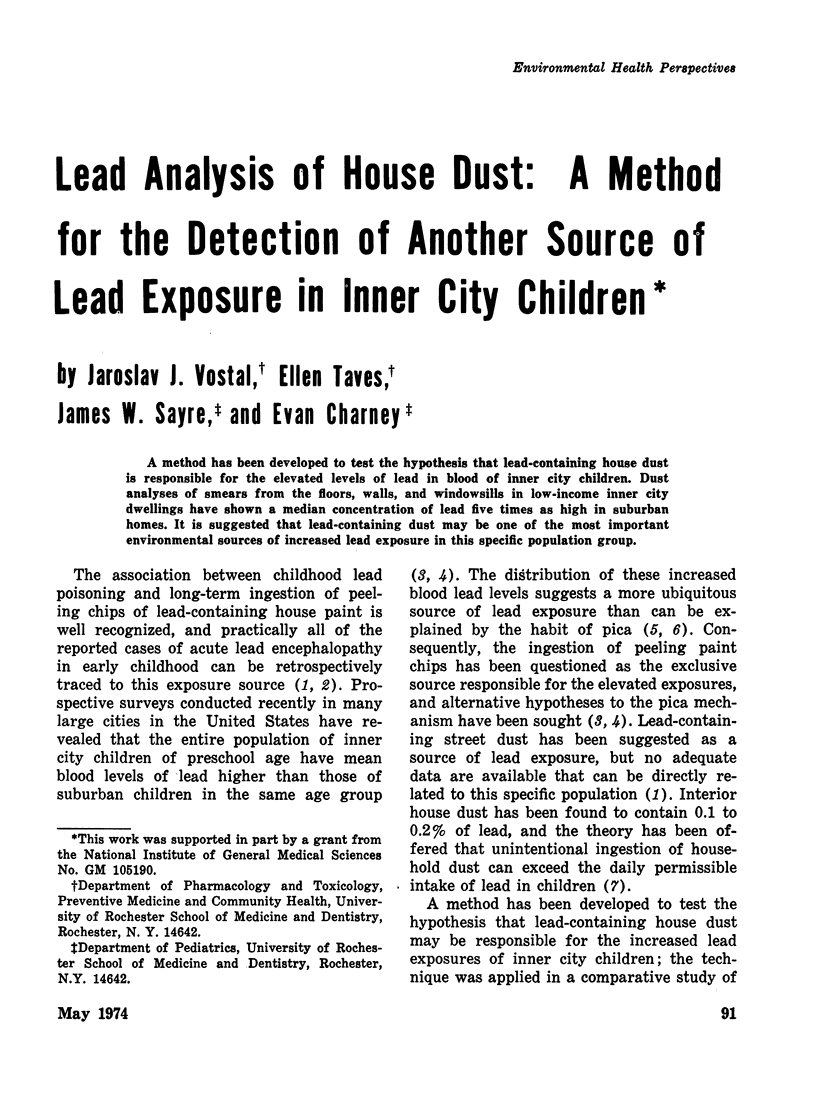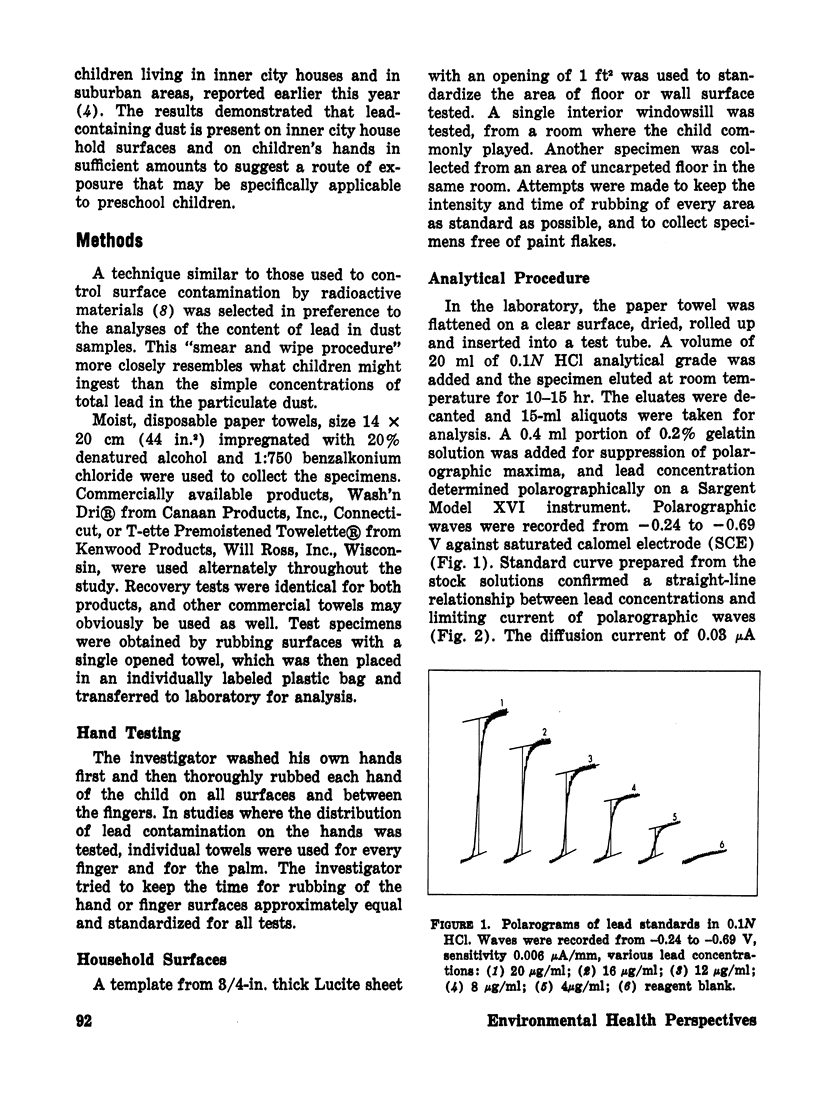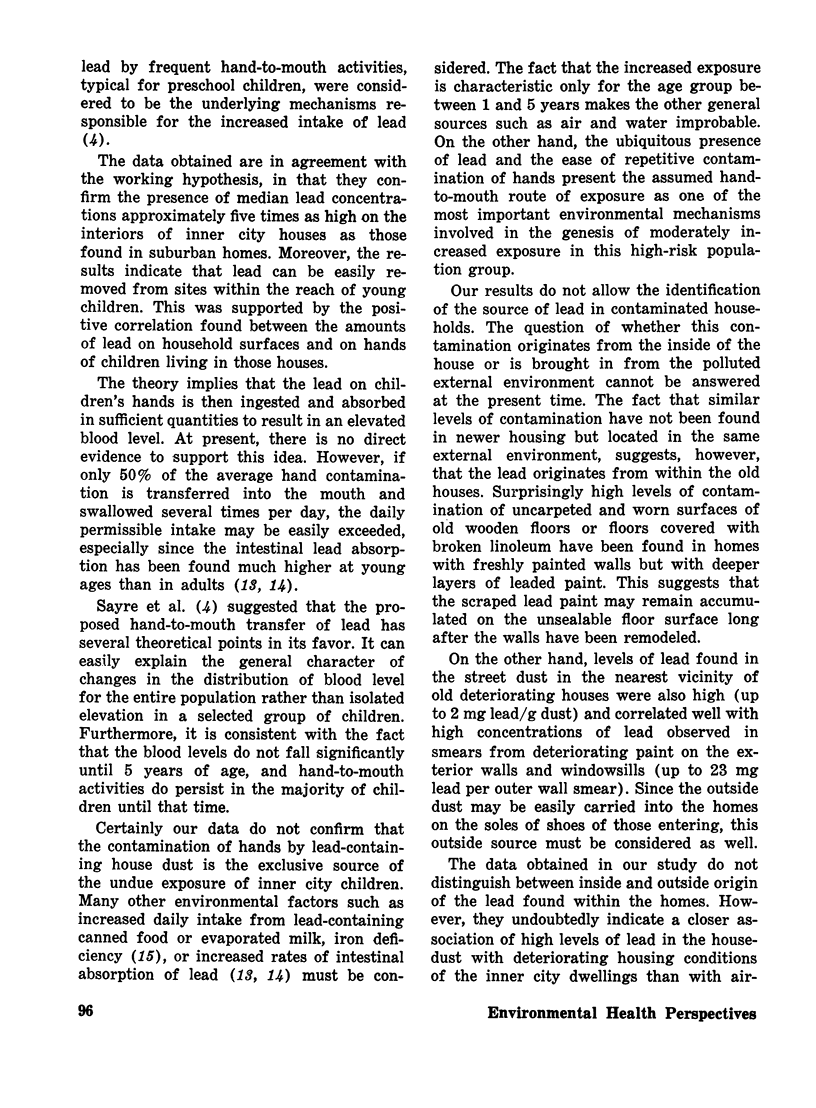Abstract
A method has been developed to test the hypothesis that lead-containing house dust is responsible for the elevated levels of lead in blood of inner city children. Dust analyses of smears from the floors, walls, and windowsills in low-income inner city dwellings have shown a median concentration of lead five times as high in suburban homes. It is suggested that lead-containing dust may be one of the most important environmental sources of increased lead exposure in this specific population group.
Full text
PDF






Selected References
These references are in PubMed. This may not be the complete list of references from this article.
- Barltrop D. The prevalence of pica. Am J Dis Child. 1966 Aug;112(2):116–123. doi: 10.1001/archpedi.1966.02090110060004. [DOI] [PubMed] [Google Scholar]
- CHISOLM J. J., Jr, HARRISON H. E. The exposure of children to lead. Pediatrics. 1956 Dec;18(6):943–958. [PubMed] [Google Scholar]
- Chisolm J. J., Jr Screening for lead poisoning in children. Pediatrics. 1973 Feb;51(2):280–283. [PubMed] [Google Scholar]
- Forbes G. B., Reina J. C. Effect of age on gastrointestinal absorption (Fe, Sr, Pb) in the rat. J Nutr. 1972 May;102(5):647–652. doi: 10.1093/jn/102.5.647. [DOI] [PubMed] [Google Scholar]
- GRIGGS R. C., SUNSHINE I., NEWILL V. A., NEWTON B. W., BUCHANAN S., RASCH C. A. ENVIRONMENTAL FACTORS IN CHILDHOOD LEAD POISONING. JAMA. 1964 Mar 7;187:703–707. doi: 10.1001/jama.1964.03060230031008. [DOI] [PubMed] [Google Scholar]
- KEHOE R. A. The metabolism of lead in man in health and disease. 2(2). The metabolism of lead under abnormal conditions. J R Inst Public Health. 1961 Jun;24:129–143. [PubMed] [Google Scholar]
- Lin-Fu J. S. Undue absorption of lead among children--a new look at an old problem. N Engl J Med. 1972 Mar 30;286(13):702–710. doi: 10.1056/NEJM197203302861306. [DOI] [PubMed] [Google Scholar]
- Millican F. K., Layman E. M., Lourie R. S., Takahashi L. Y. Study of an oral fixation: pica. J Am Acad Child Psychiatry. 1968 Jan;7(1):79–107. doi: 10.1016/s0002-7138(09)61540-5. [DOI] [PubMed] [Google Scholar]
- Needleman H. L., Scanlon J. Getting the lead out. N Engl J Med. 1973 Mar 1;288(9):466–467. doi: 10.1056/NEJM197303012880911. [DOI] [PubMed] [Google Scholar]
- Sayre J. W., Charney E., Vostal J., Pless I. B. House and hand dust as a potential source of childhood lead exposure. Am J Dis Child. 1974 Feb;127(2):167–170. doi: 10.1001/archpedi.1974.02110210017002. [DOI] [PubMed] [Google Scholar]
- Six K. M., Goyer R. A. The influence of iron deficiency on tissue content and toxicity of ingested lead in the rat. J Lab Clin Med. 1972 Jan;79(1):128–136. [PubMed] [Google Scholar]


